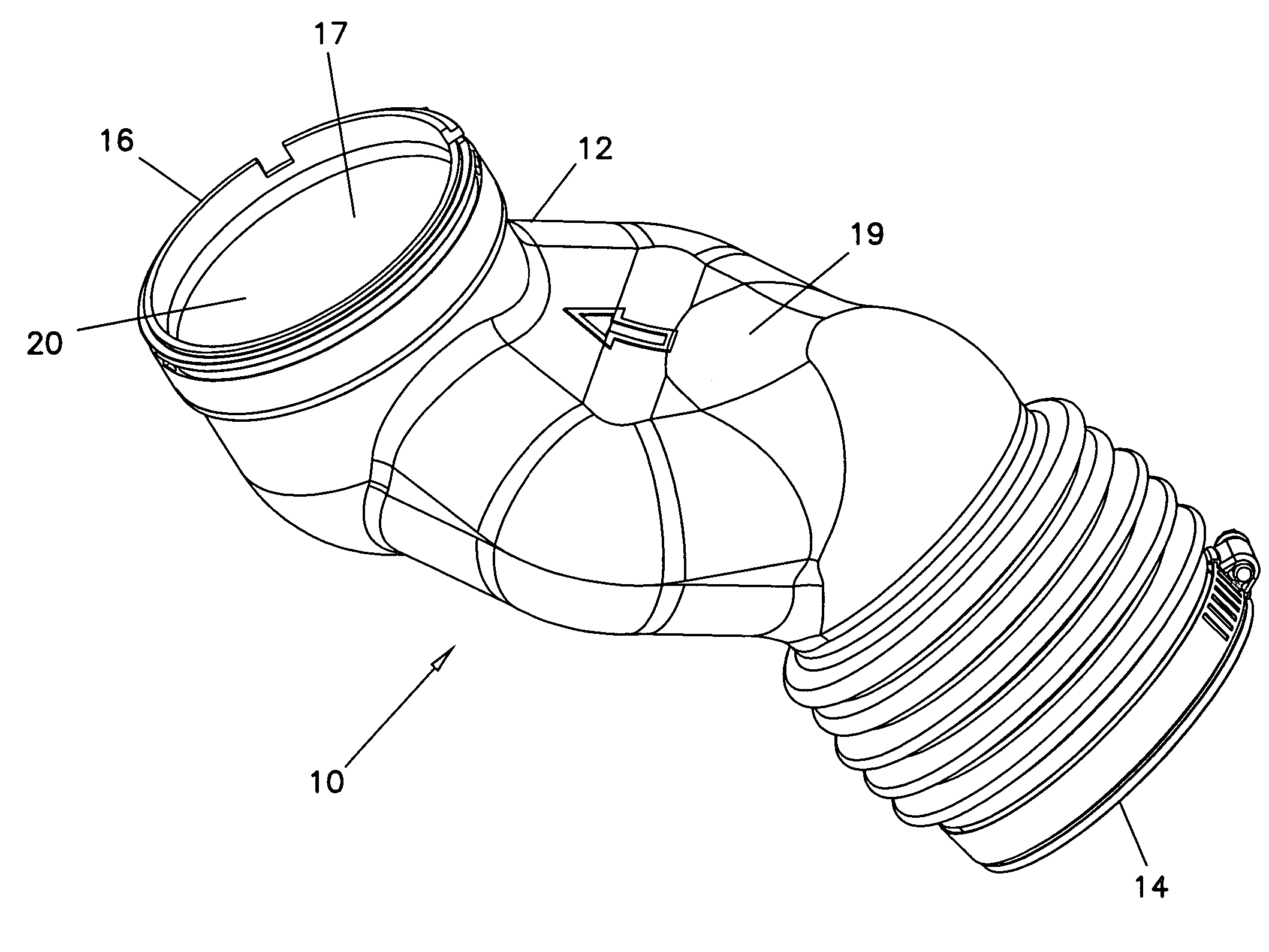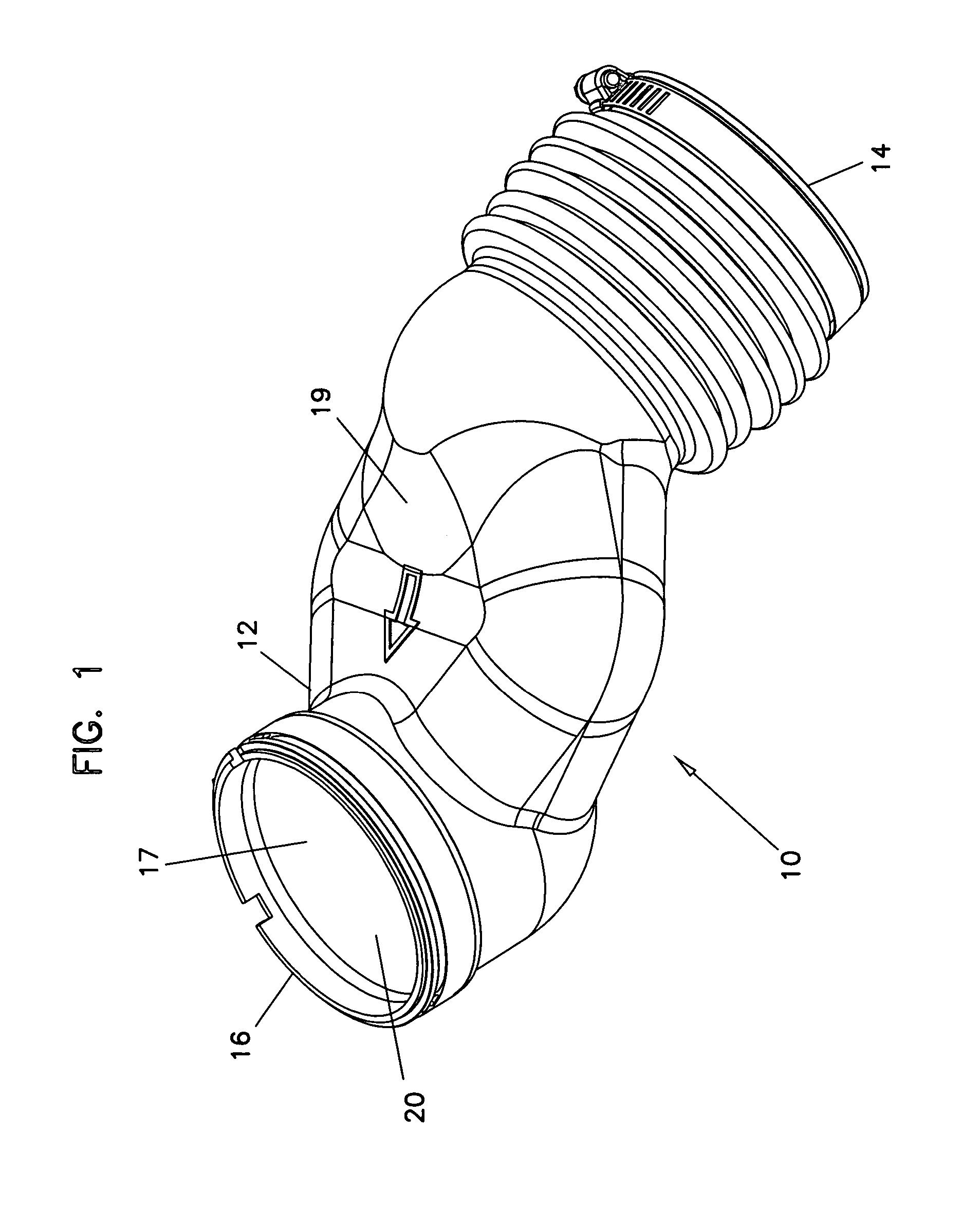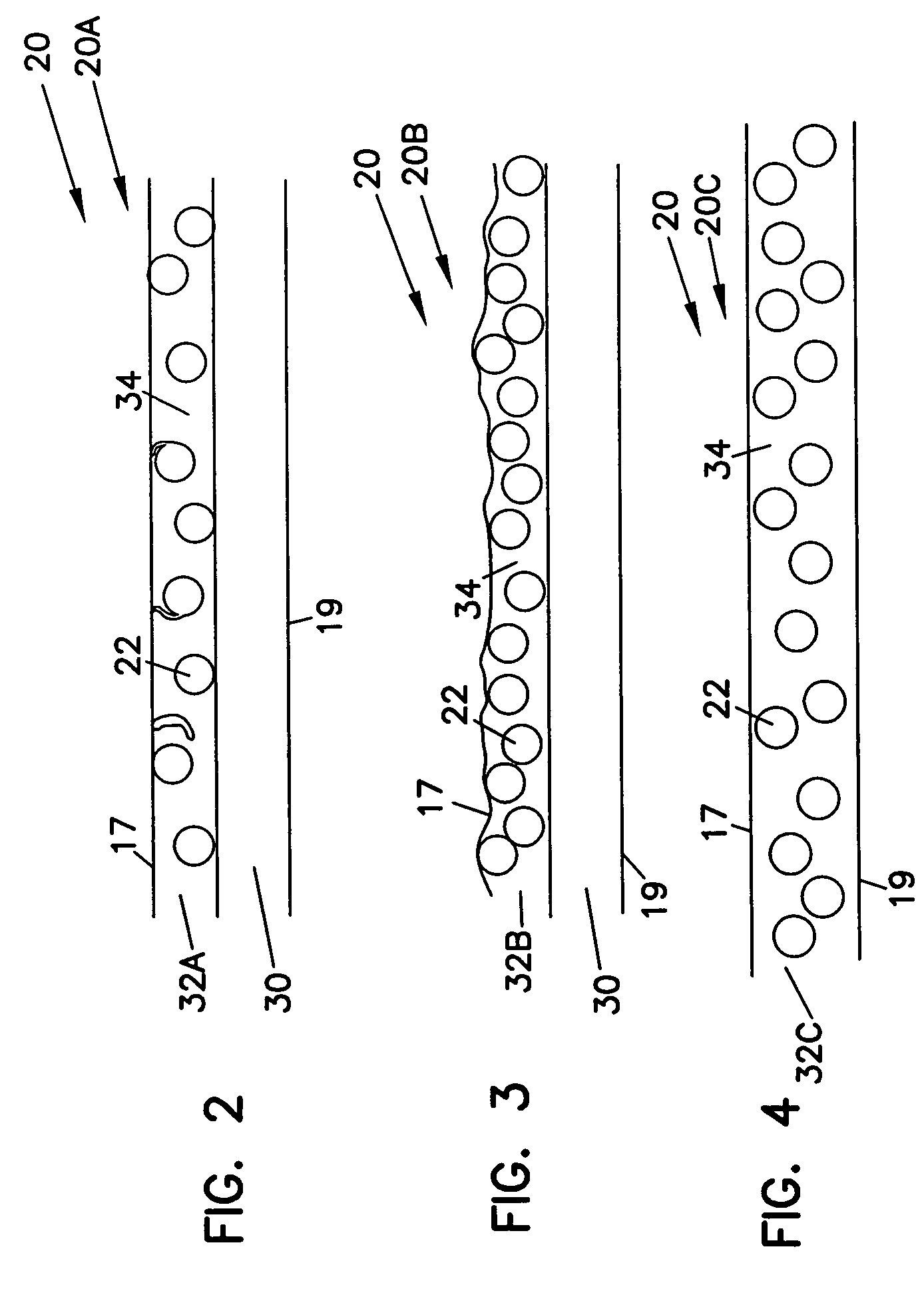Adsorptive duct for contaminant removal, and methods
a technology of adsorption duct and contaminant, applied in the field of adsorption elements, can solve the problems that reactive and unreactive silicon containing materials, such as silanes, siloxanes and silanols, can be particularly detrimental to contaminants in some applications
- Summary
- Abstract
- Description
- Claims
- Application Information
AI Technical Summary
Benefits of technology
Problems solved by technology
Method used
Image
Examples
first embodiment
[0027]A First Embodiment
[0028]Illustrated in FIG. 2 is adsorptive region 20A, a portion of duct 10 which includes a plurality of adsorptive material particles 22. Adsorptive region 20A includes a base layer 30 and an adsorptive layer 32A, the adsorptive particles 22 being present within adsorptive layer 32A.
[0029]Base layer 30, which generally forms the overall structure of body 12 and defines outer surface 19, is formed from a polymeric material, such as polyethylene, polypropylene, polyvinyl chloride (PVC), polycarbonate, nylon, polystyrene, poly(methyl methacrylate), thermoplastic elastomers (TPE), and any combinations thereof. Reinforcing materials, such as scrim, fibers and the like may be present within base layer 30. The material used for base layer 30 should have a softening point of no less than about 275° F. Base layer 30 is substantially impermeable to components commonly found in air.
[0030]Adsorptive layer 32A, present adjacent to and attached to base layer 30, defines i...
third embodiment
[0041]A Third Embodiment
[0042]Illustrated in FIG. 4 is adsorptive region 20C, a portion of duct 10 which includes a plurality of adsorptive material particles 22. Adsorptive region 20C has an adsorptive layer 32C having adsorptive particles 22 present therein. For this embodiment, no separate or discernible base layer is present. Rather, adsorptive layer 32C forms the overall structure of body 12, defines outer surface 19, and inner surface 17.
[0043]Duct 10 having adsorptive region 20C can be made by various molding techniques and extrusion techniques. When using molding techniques, the preferred size of adsorptive material 22 is about 100–325 mesh, and the concentration by weight of material 22 in adsorptive layer 32C is about 20–90%, more preferably about 30–60%. In one configuration, the overall thickness of adsorptive layer 32C and of duct 10 is about 3–5 mm; in another configuration, the overall thickness of adsorptive layer 32C and of duct 10 is about 5–10 mm.
[0044]It is under...
PUM
| Property | Measurement | Unit |
|---|---|---|
| thickness | aaaaa | aaaaa |
| thickness | aaaaa | aaaaa |
| thick | aaaaa | aaaaa |
Abstract
Description
Claims
Application Information
 Login to View More
Login to View More - R&D
- Intellectual Property
- Life Sciences
- Materials
- Tech Scout
- Unparalleled Data Quality
- Higher Quality Content
- 60% Fewer Hallucinations
Browse by: Latest US Patents, China's latest patents, Technical Efficacy Thesaurus, Application Domain, Technology Topic, Popular Technical Reports.
© 2025 PatSnap. All rights reserved.Legal|Privacy policy|Modern Slavery Act Transparency Statement|Sitemap|About US| Contact US: help@patsnap.com



